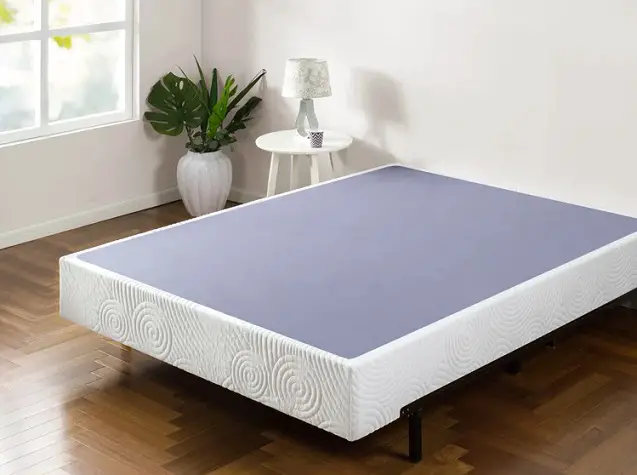I have had my fair share of restless nights where my memory foam pillow felt just a tad bit too firm for comfort. Fortunately, I discovered a few simple tricks to make it irresistibly soft and cozy.
In this article, I will share with you my tried and tested methods to achieve pillow perfection and make your memory foam pillow softer than ever before. So, get ready to say goodbye to sleepless nights and hello to ultimate comfort!
Table of Contents
Choosing the Right Pillow
Consider Your Sleeping Position
When it comes to choosing the right pillow, the first thing to consider is your sleeping position. Your pillow should provide the necessary support and comfort for your head, neck, and shoulders, regardless of whether you sleep on your back, side, or stomach.
For back sleepers, a medium-thickness pillow that keeps the head aligned with the spine is ideal. Side sleepers may benefit from a thicker pillow to ensure proper alignment and support for the neck. Stomach sleepers, on the other hand, should opt for a thinner pillow to prevent strain on the neck.
Evaluate Pillow Thickness
The thickness of your pillow is another important factor to consider. Some pillows come in different thickness options, while others have adjustable inserts to customize the pillow’s thickness according to your preference.
If you prefer a higher loft, a thick pillow might be the best choice. It can provide better neck and head support, especially for side sleepers with broader shoulders. However, if you prefer a flatter surface, a thinner pillow may be more suitable for you.
Select the Right Density
Pillow density refers to how firm or soft the pillow feels when you lay your head on it. The ideal density depends on your personal preference and body type.
For those who prefer a firmer pillow, a higher-density memory foam pillow may be the best option. This type of pillow offers more support and maintains its shape for a longer time.
On the other hand, if you prefer a softer pillow that molds to the shape of your head and neck, a lower-density memory foam pillow would be the better choice.
Washing and Drying the Pillow
Follow the Manufacturer’s Instructions
To keep your pillow clean and fresh, it’s important to follow the manufacturer’s instructions for washing and drying. Some memory foam pillows are machine washable, while others may require hand washing. Always check the label or packaging for specific instructions to avoid damaging the pillow.
Use Mild Detergent
When washing your memory foam pillow, it’s best to use a mild detergent that is gentle on the fabric. Harsh chemicals or strong detergents may break down the foam or leave behind a residue that can affect the pillow’s performance. Additionally, avoid using bleach as it can cause discoloration.
Avoid Heat While Drying
While drying your memory foam pillow, it’s important to avoid exposing it to direct heat, such as from a dryer or heater. Heat can damage the foam and cause it to lose its shape. Instead, air drying is the safest and most effective method.
Place the pillow in a well-ventilated area and allow it to naturally dry. This may take some time, but it will help preserve the quality and integrity of the pillow.
Fluffing and Shaking
Fluffing by Hand
To maintain the loft and shape of your memory foam pillow, it’s recommended to fluff it daily. Fluffing by hand involves gently pressing and squeezing the pillow to redistribute the foam and restore its original shape. This helps prevent the foam from settling in certain areas and maintains the pillow’s overall comfort and support.
Shaking the Pillow
Another easy way to fluff your memory foam pillow is by giving it a good shake. Hold the pillow at both ends and vigorously shake it for a few seconds. This helps loosen the foam and redistribute it, allowing the pillow to regain its fullness. Remember to do this in a well-ventilated area to avoid dust accumulation.
Use Pillow Protector
Using a pillow protector can also aid in fluffing and maintaining the shape of your memory foam pillow. Pillow protectors are thin covers that go over your pillow before you put on the pillowcase.
They add an extra layer of protection against dirt, sweat, and allergens while also keeping the pillow in its proper shape. Additionally, pillow protectors can be easily removed and washed, making them a convenient way to extend the life of your pillow.
Using a Pillow Topper
Selecting the Right Topper
If you find that your memory foam pillow is still not providing the desired level of softness, you can consider using a pillow topper. Pillow toppers are additional layers that you place on top of your pillow to provide extra cushioning and comfort.
When selecting a pillow topper, choose one that complements the firmness of your memory foam pillow. A soft and plush topper can make the pillow feel softer, while a firmer topper can add more support. Experiment with different materials, such as down, feather, or microfiber, to find the one that best suits your preferences.
Adjusting the Topper Firmness
If the pillow topper you choose is too soft or too firm, you can easily adjust its firmness to meet your needs. For a softer feel, fluff the topper by hand or put it in the dryer on the lowest heat setting with a couple of tennis balls. For a firmer feel, place the topper in the sun for a few hours to allow it to firm up naturally.
DIY Pillow Softeners
Using Fabric Softener
If you’re looking for a quick and easy way to make your memory foam pillow softer, try using fabric softener. Dilute a small amount of fabric softener with water in a spray bottle and spritz it lightly over the pillow.
Allow the pillow to air dry before using it again. The fabric softener helps relax the foam fibers, making the pillow feel softer and more comfortable.
Spraying Pillow with Water
Another simple method to soften your memory foam pillow is by spraying it lightly with water. Fill a spray bottle with water and mist it over the pillow, focusing on the areas that feel too firm.
Allow the water to absorb into the foam and let the pillow air dry. The moisture helps relax the foam and allows it to contour to your head and neck, providing a softer sleeping surface.
Using Tennis Balls
Using tennis balls is a popular technique to soften memory foam pillows. Simply place two to four clean tennis balls in the dryer with the pillow on a low heat setting. As the balls tumble around, they help break up any clumps in the foam and increase its loft and softness.
Be sure to check the manufacturer’s instructions first to ensure that your memory foam pillow is safe to use with a dryer and tennis balls.
Adding Additional Layers
Inserting a Feather Pillow
If you prefer a softer and fluffier sleeping surface, you can enhance the softness of your memory foam pillow by layering a feather pillow on top. Place the feather pillow between the memory foam pillow and the pillowcase. The feather pillow provides an added layer of cushioning and coziness, giving you the perfect combination of support and softness.
Layering with a Soft Blanket
Another option for adding extra softness to your memory foam pillow is to layer it with a soft blanket. Fold the blanket into a square shape and place it on top of the pillow before putting on the pillowcase. The blanket adds a plush layer that enhances the pillow’s softness and can make a noticeable difference in your sleeping experience.
Using a Thin Mattress Topper
For ultimate softness and comfort, consider using a thin mattress topper on top of your memory foam pillow. A thin mattress topper made of soft materials such as down or microfiber can provide an extra layer of cushioning and create a cloud-like feel.
Place the topper on the pillow and secure it with a fitted sheet or pillowcase. This luxurious combination is sure to make your memory foam pillow feel irresistibly soft and cozy.
Optimizing Pillow Placement
Consider Placement Underneath Another Pillow
If your memory foam pillow feels too firm, you can try placing it underneath another pillow to soften the overall feel. This technique adds an extra layer of cushioning and can make the pillow feel more comfortable.
Experiment with different types of pillows, such as down or synthetic fill pillows, to find the perfect combination of softness and support.
Adjusting Elevation
Sometimes, a change in elevation can make a significant difference in the softness of your pillow. If you find your memory foam pillow too firm, try adjusting its height by either folding it in half or compressing it slightly.
This can redistribute the foam and make the pillow feel softer and more conforming to your head and neck.
Rotating and Flipping
Rotate the Pillow Regularly
Rotating your memory foam pillow regularly helps distribute the pressure evenly and prevent the foam from compressing in certain areas. Every few weeks, flip the pillow over so that the opposite side is facing up. This ensures that both sides of the pillow are exposed to the same amount of pressure and helps maintain its softness and shape for longer.
Flip the Pillow Periodically
In addition to rotating the pillow, it’s also beneficial to flip it periodically. This means turning the pillow upside down so that the bottom becomes the top. Flipping the pillow helps prevent uneven wear and tear, ensuring that both sides of the pillow receive equal support and softness. It’s a simple yet effective way to prolong the lifespan of your memory foam pillow.
Using a Pillowcase
Choosing a Pillowcase Material
When it comes to pillowcases for your memory foam pillow, the choice of material can impact its softness. Opt for materials that are soft and breathable, such as cotton or bamboo, as they offer a comfortable and cool sleeping surface. Avoid synthetic materials that may trap heat and moisture, making the pillow feel uncomfortable and less soft.
Opting for a Looser Pillowcase
To allow your memory foam pillow to retain its softness, it’s important to choose a pillowcase that fits loosely. A tight-fitting pillowcase can compress the foam and affect its softness. Opt for a pillowcase that provides enough room for the pillow to fully expand and maintain its loft.
A looser pillowcase also makes it easier to remove and wash, promoting better pillow hygiene.
Replacing the Pillow
Knowing When to Replace
No matter how well you care for your memory foam pillow, there will come a time when it needs to be replaced. Over time, memory foam can lose its elasticity and become less supportive and comfortable.
If you notice significant changes in the pillow’s shape, loft, or feel, it may be time to invest in a new one. As a general guideline, consider replacing your memory foam pillow every 2-3 years for optimal comfort and support.
Selecting a New Pillow
When selecting a new memory foam pillow, keep in mind the factors that contribute to its softness, such as thickness, density, and material. Consider your sleeping position, personal preferences, and any specific requirements for support or comfort.
Test out different options, consult customer reviews, and choose a pillow that suits your individual needs. With the right choice, you can enjoy a softer and more comfortable sleep experience night after night.
In conclusion, achieving the perfect level of softness for your memory foam pillow is all about understanding your individual needs and preferences. From choosing the right pillow and adjusting its thickness and density to implementing simple techniques like fluffing, adding toppers, and layering, there are plenty of options to enhance the softness of your pillow.
By following proper care and maintenance practices, you can ensure that your memory foam pillow remains soft, supportive, and comfortable for years to come. Sweet dreams!

